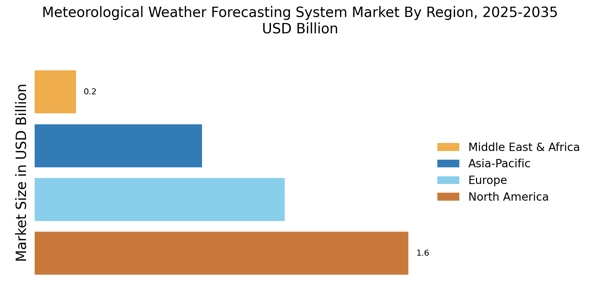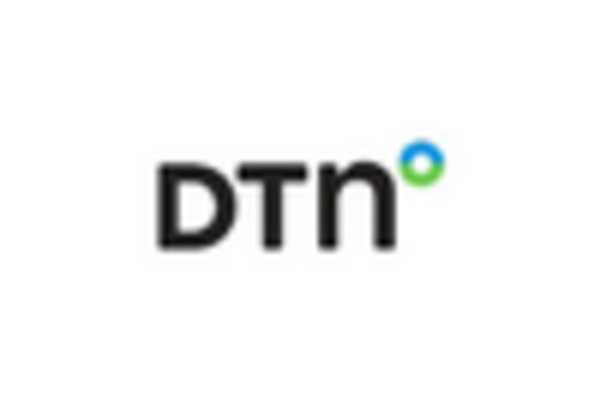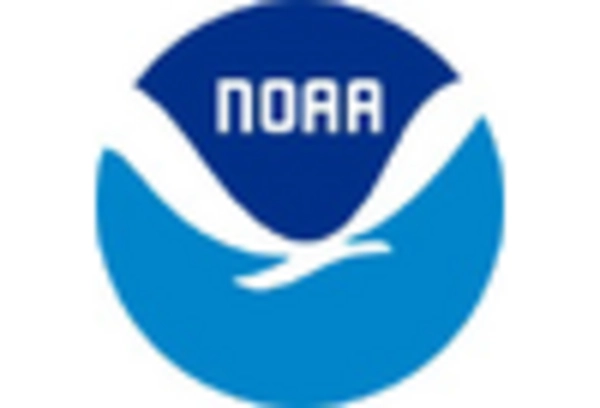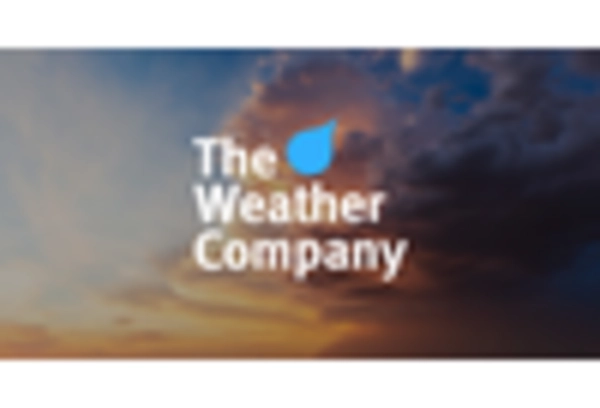Growing Demand for Real-Time Data
The demand for real-time data in weather forecasting is a significant driver in the Meteorological Weather Forecasting System Market. As industries such as agriculture, transportation, and energy increasingly rely on timely weather information, the need for systems that provide immediate updates has surged. This trend is reflected in the market, where the real-time weather data segment is expected to account for a substantial share of the overall market revenue. The ability to access and analyze real-time data allows businesses to make informed decisions, thereby enhancing operational efficiency and safety. Consequently, the Meteorological Weather Forecasting System Market is likely to expand as providers enhance their offerings to meet this demand.
Advancements in Satellite Technology
Advancements in satellite technology are significantly influencing the Meteorological Weather Forecasting System Market. The deployment of new satellite systems enhances the ability to monitor weather patterns and collect data from remote areas. These technological improvements facilitate more accurate and comprehensive weather forecasts, which are essential for various applications, including disaster response and climate monitoring. The market for satellite-based weather forecasting is expected to grow, with investments in satellite technology projected to reach several billion dollars in the next few years. As these advancements continue, the Meteorological Weather Forecasting System Market is likely to benefit from enhanced capabilities and increased demand for satellite data.
Integration of Artificial Intelligence
The integration of artificial intelligence (AI) into the Meteorological Weather Forecasting System Market appears to be a pivotal driver. AI technologies enhance predictive accuracy by analyzing vast datasets, which can lead to more reliable weather forecasts. This capability is particularly crucial as the demand for precise weather information increases across various sectors, including agriculture, aviation, and disaster management. The market for AI in weather forecasting is projected to grow significantly, with estimates suggesting a compound annual growth rate of over 20% in the coming years. As organizations seek to leverage AI for improved decision-making, the Meteorological Weather Forecasting System Market is likely to experience substantial growth.
Increasing Investment in Climate Research
Investment in climate research is becoming increasingly vital within the Meteorological Weather Forecasting System Market. Governments and private entities are allocating more resources to understand climate change and its impacts. This trend is driven by the need for accurate forecasting to mitigate the effects of extreme weather events. Reports indicate that funding for climate research has seen a steady increase, with some regions reporting budget allocations exceeding 10 billion dollars annually. Such investments not only enhance forecasting capabilities but also foster innovation in meteorological technologies, thereby propelling the Meteorological Weather Forecasting System Market forward.
Rising Awareness of Weather-Related Risks
Rising awareness of weather-related risks is driving growth in the Meteorological Weather Forecasting System Market. As extreme weather events become more frequent, individuals and organizations are increasingly recognizing the importance of accurate weather forecasting. This heightened awareness leads to greater investment in meteorological systems that can provide timely and precise information. Reports indicate that sectors such as insurance and emergency management are particularly focused on improving their forecasting capabilities to mitigate risks. As a result, the Meteorological Weather Forecasting System Market is poised for growth as stakeholders seek advanced solutions to address these challenges.


















Leave a Comment